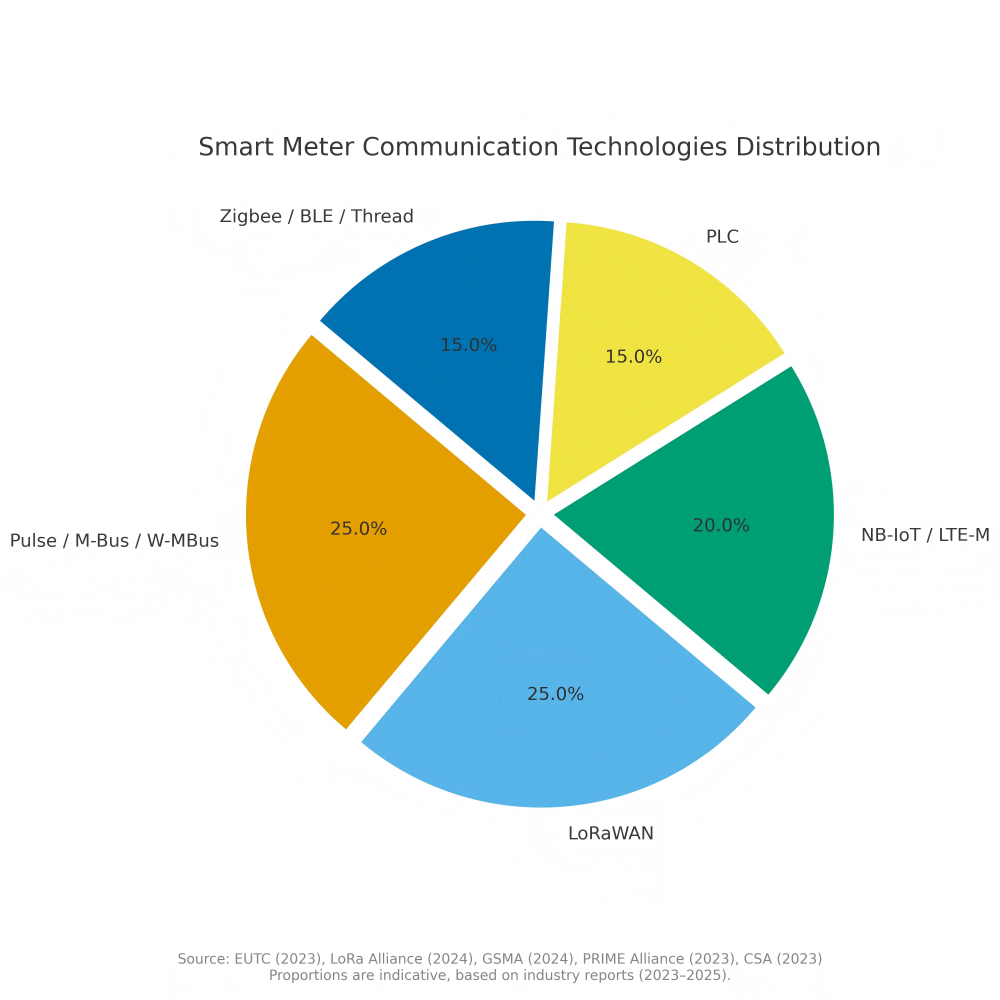Modern metering systems rely on communication networks to deliver reliable, accurate, and actionable data. Mechanical meters alone cannot provide the real-time visibility that utilities need for efficient operations.
1. Pulse Reading and M-Bus / W-MBus
Pulse readers convert mechanical rotations into digital pulses. When combined with M-Bus (wired) or Wireless M-Bus (EN 13757), they provide reliable data collection for buildings and districts. W-MBus supports multiple modes (S/T/C/N) and is compatible with Open Metering System (OMS) profiles for interoperability.
2. LPWAN Technologies — LoRaWAN, NB-IoT, LTE-M
-
LoRaWAN enables low-power, long-range telemetry via gateways. Effective urban range depends on environment and gateway placement.
-
NB-IoT and LTE-M are 3GPP-standard cellular LPWAN options with deep indoor coverage, power-saving modes (PSM/eDRX), and scalability for city-wide deployments.
3. Power Line Communication (PLC)
PLC carries data through existing electrical wiring, reducing the need for additional infrastructure. Narrowband (G3-PLC, PRIME) is common in metering and grid control, while broadband PLC targets higher throughput.
4. Short-Range Networks
Zigbee, BLE, and Thread support local networks and smart-home integration. Walk-by and drive-by AMR are practical solutions where persistent networks are unavailable.
5. Security and Lifecycle Considerations
Secure authentication, end-to-end encryption, and firmware updates are essential. Battery life and coverage depend on reporting frequency, deployment environment, and device class.
Modern metering is a hybrid ecosystem. Selecting the right combination of communication technologies ensures efficiency, scalability, and sustainability while supporting future smart grid initiatives.
(Standards: EN 13757, LoRaWAN, 3GPP NB-IoT/LTE-M, G3-PLC/PRIME, IEEE 1901)
Post time: Oct-31-2025








